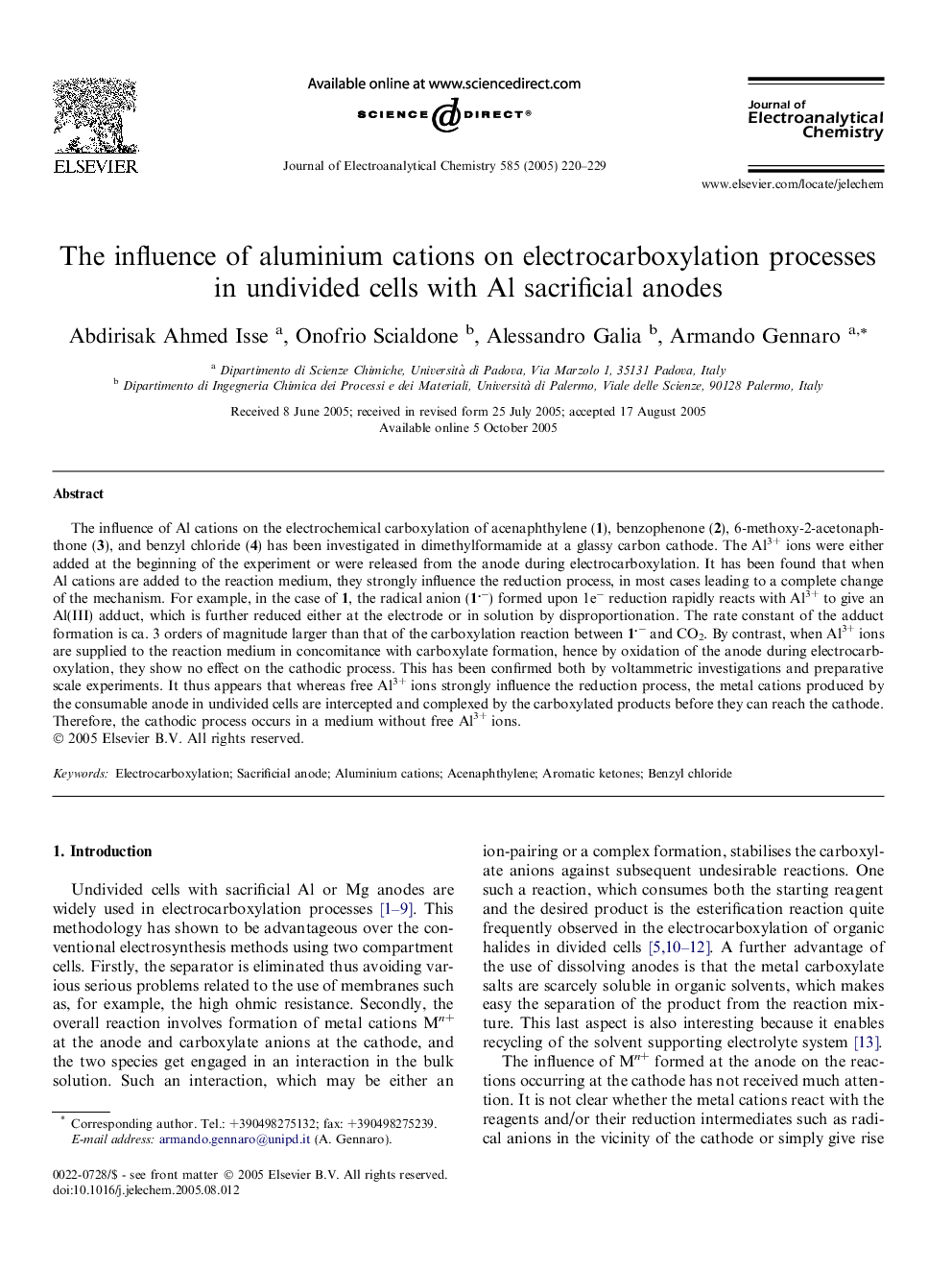| Article ID | Journal | Published Year | Pages | File Type |
|---|---|---|---|---|
| 10275721 | Journal of Electroanalytical Chemistry | 2005 | 10 Pages |
Abstract
The influence of Al cations on the electrochemical carboxylation of acenaphthylene (1), benzophenone (2), 6-methoxy-2-acetonaphthone (3), and benzyl chloride (4) has been investigated in dimethylformamide at a glassy carbon cathode. The Al3+ ions were either added at the beginning of the experiment or were released from the anode during electrocarboxylation. It has been found that when Al cations are added to the reaction medium, they strongly influence the reduction process, in most cases leading to a complete change of the mechanism. For example, in the case of 1, the radical anion (1â) formed upon 1eâ reduction rapidly reacts with Al3+ to give an Al(III) adduct, which is further reduced either at the electrode or in solution by disproportionation. The rate constant of the adduct formation is ca. 3 orders of magnitude larger than that of the carboxylation reaction between 1â and CO2. By contrast, when Al3+ ions are supplied to the reaction medium in concomitance with carboxylate formation, hence by oxidation of the anode during electrocarboxylation, they show no effect on the cathodic process. This has been confirmed both by voltammetric investigations and preparative scale experiments. It thus appears that whereas free Al3+ ions strongly influence the reduction process, the metal cations produced by the consumable anode in undivided cells are intercepted and complexed by the carboxylated products before they can reach the cathode. Therefore, the cathodic process occurs in a medium without free Al3+ ions.
Related Topics
Physical Sciences and Engineering
Chemical Engineering
Chemical Engineering (General)
Authors
Abdirisak Ahmed Isse, Onofrio Scialdone, Alessandro Galia, Armando Gennaro,
